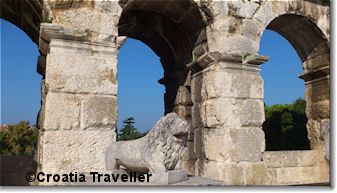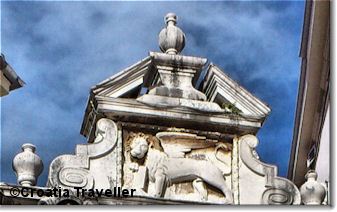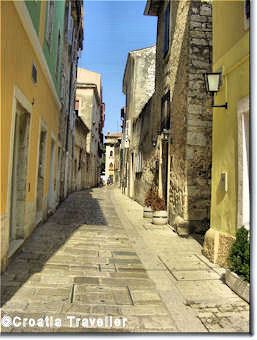Here's a riddle: "My grandmother was born in Austria, married in Italy, raised kids in Yugoslavia and died in Croatia. Yet she never left her birthplace. Where was it?" Answer: Istria. That's right: Istria flew four flags in less than 100 years. Go back a few thousand years and there were a lot more.
Istria derives its name from the Illyrian "Histri" tribe that settled the region about 2000 years BC, taking over the hill forts built by prior inhabitants. About 400BC Celtic tribes swept into the region and assimilated with the native population. The Romans invaded in 221BC and conducted a series of wars intended to subjugate the Histri who resisted fiercely. They fought nearly to the last man, woman and child but were decisively defeated in 177BC.
The Romans lost no time in consolidating their rule, setting up Pula and Porec (Pola and Parentium) as self-governing Roman communities composed largely of retired soldiers. Remnants of Roman rule are evident in Pula's Roman amphitheatre and in Porec's straight Roman streets.
When Rome fell in 476AD, the Goths invaded and then Istria became part of the Eastern Roman Empire or Byzantium. The most stunning reminder of the Byzantine period is the Euphrasian basilica in Porec which is adorned with 5th-century mosaics. The Slavs entered Istria in 599 but Byzantine culture predominated until the Franks conquered Istria in 788. The Slavs, Franks and German feudal lords battled for control of the peninsula over the ensuing centuries.
Meanwhile, the successor to Byzantium, Venice, gradually imposed itself on the Istrian coast with the aim of creating transit points on the way to its distant trade partners in the Middle East. Rovinj, Umag, Porec, Novigrad, Motovun, Pula, Labin and much of the hinterland became part of the Venetian empire in the 13th century. Only Pazin remained independent of Venice and under Austrian influence.
Under Venetian rule, Istria was ravaged by disease and subject to repeated raids by Turks and Uskoks. With the fall of Venice in 1797, Austrians took over and except for a four-year French interlude (1809-1813) governed Istria until the end of the First World War. With the Treaty of Rapallo in 1920, Istria became a part of Italy.
A period of confusion followed as Italians moved into Istria and native Croats and Slovenes left. The Italianization of Istria meant a government ban on Slavic language, press, schools and culture.
With Italy's defeat at the end of World War Two, Istria became part of Tito's Yugoslavia and the Italian population left en masse, abandoning jobs and property. The result is a tangle of property claims that persists to this day.
Tito reorganized the Istrian peninsula to give the northern portion to the Slovene portion of Yugoslavia. When Yugoslavia split up in the early 1990s, Slovenia retained its small portion of Istria. During the Balkan War of 1990 to 1995, Istria contributed soldiers but remained largely aloof from the fighting and suffered no damage.
Join the Croatia Traveller Group
Recommended Experiences
©CroatiaTraveller 2005-2024 All rights reserved



